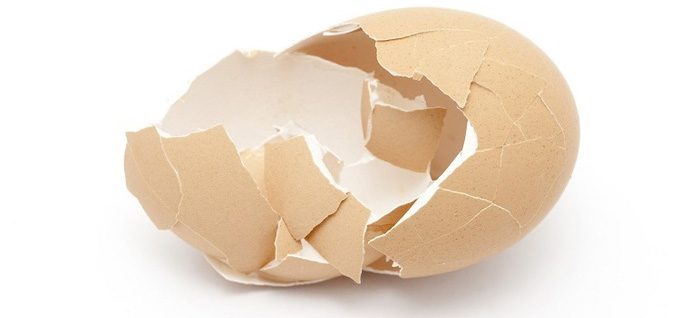Eggshells contain 94% calcium carbonate, and Dr. Thiện and his team have found a way to synthesize it to create materials that assist in the treatment or replacement of bones.
As a scientist specializing in nanomaterials, Associate Professor Dr. Đoàn Văn Hồng Thiện (41 years old, Can Tho University) focuses his research on environmentally friendly methods. Since 2017, while pursuing his Ph.D. in Taiwan, he discovered that eggshells contain 94% calcium carbonate, the main component of hydroxyapatite (HA), and sought ways to extract it.
He used crushed eggshells, removed impurities, and subjected them to high temperatures to obtain powdered CaO. Since the chemical composition of eggshells depends on the firing temperature, he increased the temperature from 800 to 1,100 degrees Celsius over 4 hours, resulting in an optimal CaO yield of 95.6% at 900 degrees Celsius.
After extraction, the CaO is dissolved in water and reacts with phosphoric acid using microwave energy. With a microwave power exceeding 800 W, the team obtained a precipitate. This precipitate is then dried at 100 degrees Celsius for 6 hours to synthesize pure HA powder. “The synthesized powder is an important material for creating artificial bones, aiding in the treatment of fractures or replacing bones affected by cancer,” Dr. Thiện stated.

Hydroxyapatite (HA) synthesized from eggshells.
Typically, HA is synthesized from pure chemicals, making it expensive and environmentally harmful. Compared to thermal exchange methods, microwave methods are considered a green solution, consuming less energy, requiring extraction times that are five times shorter, and achieving over 90% efficiency.
The research author noted that instead of using metal rods to replace fractured bones, artificial bones present a promising solution in biomedicine as they help cells adhere to transport nutrients and eliminate waste. “Bone cells are partially isolated and cultured in the laboratory, and the HA compound acts like a ‘home’ for these cells to proliferate and grow.”
After this stage, the team will experiment with creating the first prototypes of bone grafts in the laboratory and assess the biocompatibility of the materials with the body.


















































